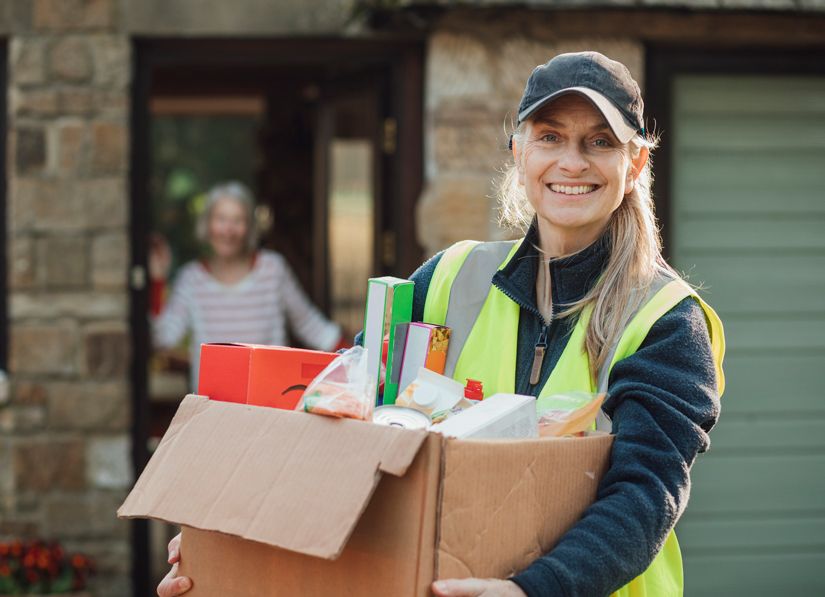
Dr Ruth Knight, Catherine Williams, 22 February, 2021
Why might someone want to volunteer? We know that both altruistic and self-interested people volunteer. It’s particularly attractive to those wanting to gain work experience, experience new challenges, feel useful, maintain their health, socialise after retirement, and family tradition, whereby for religious or cultural reasons volunteering is considered something you do to contribute to your community. Companies also use volunteering as a means to demonstrate their Corporate Social Responsibility (CSR) and support for employees’ community interests.
The value of volunteers
Over 3.3 million volunteers are essential to community and charitable organisations who rely on their support to keep administration and operating costs low. It has been estimated that volunteering within Australia has an economic value in excess of $40 Billion. This is due to the unpaid roles that volunteers fulfil, and because volunteer participation is linked to social wellbeing, with those engaged in volunteering more likely to be happy with their sense of community. For this reason the true value of volunteering cannot be adequately measured.
Keeping volunteers engaged during the pandemic
How to retain volunteers has always been a challenge for organisations that depend on a consistent and skilled volunteer workforce. Even before the COVID-19 pandemic, the report ‘Volunteering: A decade of change and continuity in Australia’ revealed that volunteering fatigue, the challenges of managing volunteers’ health and safety and a rise in episodic and virtual volunteering, were all impacting on recruiting and keeping committed volunteers.
COVID-19 has also now impacted on how organisations retain volunteers. A recent ANU report found the decline in volunteering during the pandemic has been substantial, with 65.9% of volunteers estimated to have stopped volunteering between February and April 2020. However, the report also highlights, that at the same time, the economic downturn and increased social isolation being experienced by many people has increased the demand for certain forms of volunteering. For example, some people have been informally volunteering to support their neighbours, while others have been using volunteering as potential pathways to new employment if they have been left without a job due to the pandemic.
The pandemic has challenged volunteering organisations to innovate and pivot the way they design and deliver their services. They have also had to evaluate and review the way they manage their volunteers and find ways to retain volunteers. Some are using technology more, and some organisations are simply keeping in touch with their volunteers or being more personalised when reengaging them.
The Pyjama Foundation
A great example is The Pyjama Foundation, an Australian organisation that had to quickly and creatively pivot to retain its volunteers and continue providing much needed mentoring and support to children living in out-of-home care. Normally, its trained volunteers, known as ‘Pyjama Angels’, spend an hour a week visiting the home of a child, reading books aloud, playing educational games and engaging in fun activities. But as soon as the country went into lockdown in March 2020, The Pyjama Angels could no longer visit the children. There was a high risk that this could mean volunteers would cease connecting with the children, and children would be feeling confused or disengaged through no fault of their own. The Pyjama Foundation quickly communicated with and supported their volunteers to find alternative ways to continue connecting with their Pyjama child. Many volunteers used their own initiative sending letters and meeting with their child by phone or virtually. The Pyjama Foundation sent the volunteers weekly updates with self-care tips, words of encouragement, and a wide range of resources that were adapted so the volunteers could use them in a virtual environment. It also designed and printed a story book written by one of the Pyjama Angels to help the children understand what was happening so they could ask questions and feel supported.
The result of The Pyjama Foundation’s flexibility and innovative ways of keeping both their volunteers and children engaged was that approximately two-thirds of Pyjama Angels continued to connect with the Pyjama children during the lockdown period. Out of the Pyjama Angels who had been in contact with their child, approximately 70% felt they had been able to maintain their relationship and connectedness. Most significantly, of the Pyjama Angels surveyed, more than 59% said they had been flexible so they could maintain a strong connection with the child and foster parent.
Despite the pandemic and the changes that needed to be made, overall, the Foundation only experienced a small reduction in volunteer Pyjama Angels in 2020. Now, at the beginning of 2021 the organisation has already received a surge of volunteer applications, and new volunteer training sessions are at full capacity. The Pyjama Foundation is also reporting that the innovation that was sparked in 2020 is changing The Foundation’s Love of Learning Program for the better. The Foundation has recently received a grant to develop an online resourcing portal, bringing a collaborative environment online to ensure volunteers are empowered to continue supporting their Pyjama children online if a lockdown were ever to be experienced again.
It seems that, whilst no one expected or wanted a global pandemic, some nonprofit organisations are choosing to use the opportunity to design and innovate their approach to volunteer engagement and retention.
Strategies to engage and retain volunteers
Volunteer managers who are struggling with retaining and keeping their volunteers engaged might find it helpful to draw insights from a framework called the COM-B model. It was first established as an approach to understand and change people’s behaviour, as it promotes the concept that much of human behaviour is shaped by an individual’s capability, opportunities, and motivation. Volunteering research generally supports this theory so it could be a strategic approach for volunteer managers during COVID-19.
Capabilities
To embrace this theoretical framework, managers will need to consider the capabilities of volunteers and the roles they are given or assigned to. Organisations should consider strategies such as mentoring and training, providing resources and regular performance feedback which all build self-confidence and help volunteers to feel competent and appreciated. During the pandemic, managers need to particularly ensure that volunteers can stay connected virtually, and they have the resources and skills to use new technology such as video conferencing and email. If volunteers’ roles need to be adapted to jobs that involve data entry and social media for example, managers must make sure that volunteers have the technology and skills to do this work.
Opportunities
Volunteer managers should also consider the opportunities they give to volunteers, and ensure they are matched to the goals and skills of the volunteer. This may mean that organisations provide more virtual volunteering opportunities, or opportunities to fit with the individual’s work or family commitments. Managers should never assume they know what a volunteer is looking for, or what opportunities might motivate them to stay committed to the organisation. The best way to find out is to talk with them and regularly ask questions because the pandemic is impacting people’s lives in so many ways.
This is particularly the case for corporate volunteers who may be restricted to certain days, times or roles. Some professionals want skill-based opportunities, but others want to do something that is not related to their work at all. Organisations need to consider the length of time and commitment the company is prepared to make and discuss whether they want their employees to volunteer to gain any specific outcomes.
Origin Foundation is a great example of an organisation that works with Australian nonprofit organisations to provide Origin employees with a variety of volunteering opportunities. Volunteer opportunities are regularly promoted through the Origin Energy intranet and employees can select whether they take part in unskilled or skilled volunteering opportunities, as an individual or as part of a team. The mutual benefits for both the nonprofit organisations and Origin Energy are hard to deny. Origin Foundation discovered that 84% of volunteers are highly satisfied with their volunteer experience and 81% feel a sense of pride working at Origin Energy due to their volunteering experience. This means that not only did the volunteer and Origin Energy benefit, but 19,800 young people have been positively impacted by the program since 2010.
Motivates
The COM-B model states that not only are the right capabilities and opportunities important, but it is also vital to establish what motivates people to volunteer. Understanding, exploring and measuring volunteer motives has been a focus of many researchers with the ABCE model groups these motivations in four main themes: (A) affiliation, (B) beliefs, (C) career development, and (E) egoistic. These motives can be discovered by methods such as surveys or interviews, with the findings helping managers allocate tasks according to the desires/motives of the individual. Additionally, feedback to the volunteer can be more targeted which may increase engagement and job performance, along with reducing the risk of burnout and turnover.
With the right capabilities, opportunities, and motivation, it is hoped that the individual will not only achieve task satisfaction and increase their commitment to their volunteer role, but it will also positively impact organisational performance. It may impact on the stories that volunteers share too, which could promote a culture of philanthropy within the organisation and the local community.
Further research is required but would be extremely helpful. We need to acknowledge that the COVID-19 pandemic has created a new reality, and what we desperately need are effective ways to foster individual wellbeing and socially connected communities, which is what volunteering can deliver.

